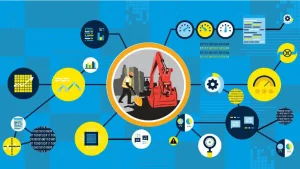Infrastructure is the bedrock of everyday life, from the roads we drive on and the sporting arenas we cheer in to the buildings where we live and work. It gives communities their roots and a physical foundation from which to grow.
At heart, it’s a tale of bricks and mortar. But these days it’s so much more, with a growing environmental focus that stretches across the globe. And nowhere is this more important than in infrastructure sustainability.
At its most simple explanation, infrastructure sustainability is about optimising design, construction and operations to minimise the environmental impact of construction projects. And when you look at the numbers around aspects such as construction waste management, its relevance and importance are crystal clear.
“In 2018-2019, the (construction) industry generated 27 million tonnes of waste from construction and demolition, such as for road and rail maintenance and land excavation.” (Blue Environment, 2020).”
The industry is also a major contributor to global greenhouse gas emissions, as illustrated in Figures 1 and 2 below, which respectively capture the emission factor of 10 machines used in construction and the emissions generated by construction waste materials.
It makes for sobering reading.
Yet here in Australia, there’s already an established appetite for change, across the public and private sectors.
In 2015, Australia put its name to the United Nations 2030 Agenda for Sustainable Development (Masige, 2020), which outlines goals across areas including resilient infrastructure. A report from RMIT and the United Nations Association of Australia also identified a jump in the number of companies prioritising sustainability goals, up from 25% in 2018 to 45% in 2019 (Masige, 2020).
So what does that mean for construction, and specifically for the creation of industry-specific Sustainable Development Goals (SDGs)?
It all comes down to technology and leadership.
As an industry which operates with very tight margins, and no mandated SDGs, a focus on cost-driven tendering can hamper the adoption of environmentally focused goals, noting they often require extra financing, time and resources.
It’s a state of play Lewis Woolcott is looking to address.
During the past two years, this visionary Australian company has developed innovative LWARE SMART technology that works to deliver SDGs that balance sustainability against direct costs. At a practical level, this means outcomes including reduced emissions at the construction phase, more efficient site planning, improved productivity and greater rigour in scrutinising design allowances. It’s a true game-changer in the drive towards a more sustainable construction culture. And you can read more about its practical applications here
Sustainable leadership
While the challenge of managing environmental factors on construction projects can be as complex as it is urgent, Lewis Woolcott is committed to incorporating sustainable practice into its project advice and management services.
“We know sustainable construction is not an overnight process, and we also understand the trade-offs for most businesses,” says Dan Woolcott. “Our 2022 aim is to implement these commercially offset SDGs for our clients’ construction projects, establish a new construction culture which instinctively adopts these practices, and build a greener future for our children.”
Visit lewiswoolcott.com for more.
